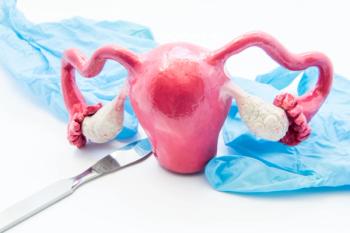
Living with Peace of Mind As a Two-Time Cancer Survivor
A two-time survivor shares how taking action led her doctors to catch an aggressive second cancer.
Often when I reveal that I am a two-time cancer survivor, I am greeted with something along the lines of “You poor thing, to have gone through so much at such a young age.” Although I appreciate the sentiment, I take a very different point of view.
I would have preferred to never have cancer at all, of course, but given that I am a carrier of the BRCA2 mutation, I find myself incredibly grateful to have received a diagnosis as young as I was. In my case, that meant early-stage diagnosis accompanied by very favorable prognoses.
In 2009, when I learned that I had ovarian cancer, I didn’t know that I carried the BRCA mutation. I assumed I just had very bad luck. Why else would an otherwise healthy 28-year-old have a cancer typically associated with post-menopausal women?
I was fortunate, though, because most women don’t receive a diagnosis until they are in a later stage. That’s because symptoms of ovarian cancer can be so easily explained away. Bloating and general fatigue are among the most common, and I don’t know any woman who hasn’t felt those at some point.
As a result, most women don’t bring these symptoms to the attention of their doctor, and when they do, doctors don’t always put the pieces of the puzzle together until the patient returns looking six months pregnant from an abdominal cavity full of fluid.
I don’t say this to be graphic or morbid, merely to explain why an early-stage diagnosis is so rare with ovarian cancer. I wasn’t conscious of any symptoms. My cancer was found as a result of a miscarriage.
I went into my OB-GYN’s office expecting to hear my baby’s heartbeat for the first time and instead left with the recommendation to have a surgery to remove a large cyst on my ovary. Because I didn’t have a significant cancer family history, everyone was shocked by the pathology report.
After I had a laparotomy (staging surgery), it was determined that there was no evidence of disease beyond the cyst, which had been removed, so the surgeon removed the ovary that the cyst had been attached to and the corresponding fallopian tube.
I felt lucky but also scared. My doctor couldn’t explain what had caused my cancer and, quite frankly, seemed put off that I was conducting my own research online and asking him questions.
My curiosity, mixed with a healthy amount of fear, allowed me to learn that 1 in 8 ovarian cancers are tied to a hereditary cancer syndrome and that approximately 1 in 400 people in the United States are carriers of a BRCA gene mutation.
Despite these facts, my doctor didn’t feel I was an appropriate candidate to receive genetic testing, mostly because there wasn’t an abundance of cancer (young or otherwise) in the family. I decided to seek a second opinion in the form of a genetic counselor, who said that although the odds were relatively small (12.5%), it was important to “rule out” hereditary breast and ovarian cancer.
Just after my 30th birthday, I learned I was positive for a BRCA2 mutation, a full 18 months following my ovarian cancer diagnosis. The mutation comes from Dad’s side of the family, where there are very few women to have presented with cancer. The genetic counselor encouraged me to quickly schedule an appointment with a breast specialist.
For those with a BRCA mutation, the recommendation is to begin breast imaging at age 25. In other words, I was five years behind having my first scans. My visit with the breast specialist led to my second cancer diagnosis — stage 1 triple-negative breast cancer.
I chose to have a double mastectomy with reconstruction even though I had cancer in only one breast. Statistics showed a 50% chance of a recurrence in the other breast, and I didn’t like those odds.
After four rounds of chemotherapy, I was left with a final decision: What do I do about my remaining ovary? Although blood tests for ovarian cancer surveillance exist, they aren’t 100% reliable, and laparoscopic surgery would have been needed each time an ovarian cyst appeared.
My new gynecological oncologist and I had several discussions about this. In December 2011, my husband and I decided that we were open to starting a family via adoption, and I had my remaining ovary and fallopian tube removed.
I’ve been cancer-free ever since and have less than a 2% chance of hearing the words “you have cancer” ever again regarding breast and ovarian cancer, which is far less than that of even the average woman without a BRCA mutation. This peace of mind allows me to focus on my other titles, wife, mother, daughter, sister, aunt, friend and advocate.




